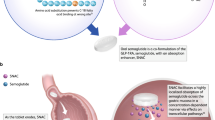Abstract
Patient self-management of oral anticoagulant therapy has over the last years gained increasing attention and widespread use. The method implies self-testing using a coagulometer (point-of-care device) and self-dosaging of coumarin. The method entails advantages for selected patients, who do not need to go to the hospital or family doctor for blood specimen and drug dosage adjustment. In contrast to patients on conventional management, patients performing self-managing have a reduced binding to the health care system, and it allows these patients unhindered to travel and manage their job or school. Therefore, the patients have a high degree of compliance because they are highly motivated. This has been the main justification for patient self-management. Furthermore, the conducted trials have also indicated a better quality of treatment compared to conventional management. In this paper the different aspects of this new treatment modality are critically reviewed, with special focus on the published clinical studies and the evaluation of the used coagulometers.
Similar content being viewed by others
Author information
Authors and Affiliations
Corresponding author
Rights and permissions
About this article
Cite this article
Christensen, T. Self-Management of Oral Anticoagulant Therapy: A Review. J Thromb Thrombolysis 18, 127–143 (2004). https://doi.org/10.1007/s11239-004-0209-5
Issue Date:
DOI: https://doi.org/10.1007/s11239-004-0209-5




